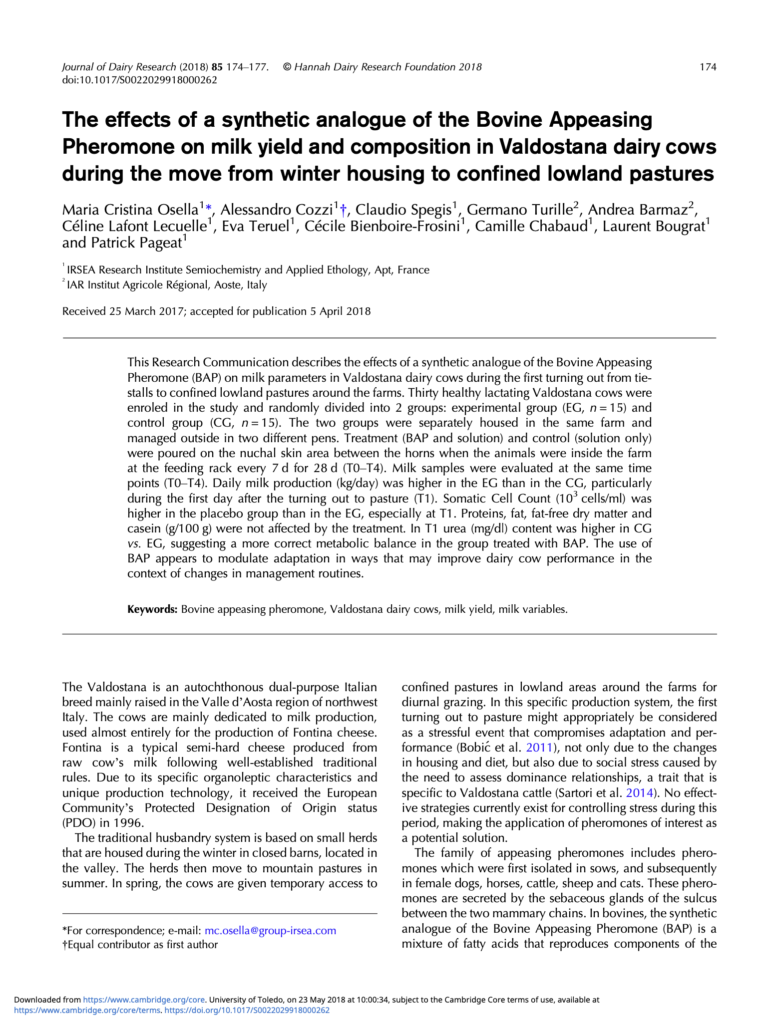Abstract:
This Research Communication describes the effects of a synthetic analogue of the Bovine Appeasing Pheromone (BAP) on milk parameters in Valdostana dairy cows during the first turning out from tie- stalls to confined lowland pastures around the farms. Thirty healthy lactating Valdostana cows were enroled in the study and randomly divided into 2 groups: experimental group (EG, n = 15) and control group (CG, n=15). The two groups were separately housed in the same farm and managed outside in two different pens. Treatment (BAP and solution) and control (solution only) were poured on the nuchal skin area between the horns when the animals were inside the farm at the feeding rack every 7 d for 28 d (T0–T4). Milk samples were evaluated at the same time points (T0–T4). Daily milk production (kg/day) was higher in the EG than in the CG, particularly during the first day after the turning out to pasture (T1). Somatic Cell Count (103 cells/ml) was higher in the placebo group than in the EG, especially at T1. Proteins, fat, fat-free dry matter and casein (g/100 g) were not affected by the treatment. In T1 urea (mg/dl) content was higher in CG vs. EG, suggesting a more correct metabolic balance in the group treated with BAP. The use of BAP appears to modulate adaptation in ways that may improve dairy cow performance in the context of changes in management routines.
Auteur: Maria Cristina Osella, Alessandro Cozzi, Claudio Spegis, Germano Turille, Andrea Barmaz, Céline Lafont Lecuelle, Eva Teruel, Cécile Bienboire-Frosini, Camille Chabaud, Laurent Bougrat and Patrick Pageat

